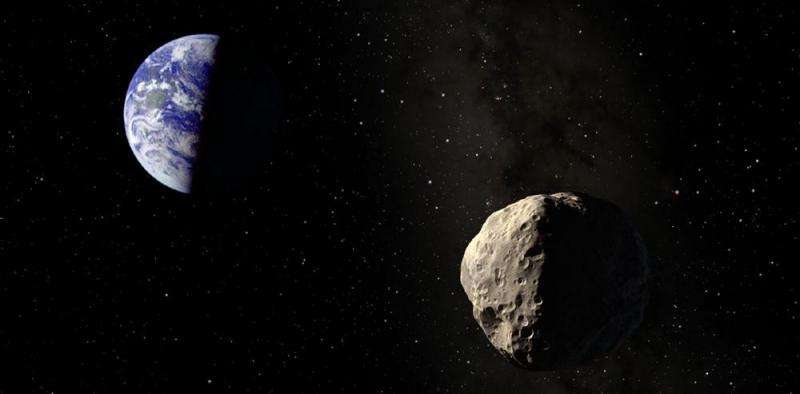Impact threat from asteroid Apophis cannot be ruled out

The famous near-Earth asteroid Apophis caused quite a stir in 2004 when it was announced that it could hit our planet. Although the possibility of an impact during its close approach in 2029 was excluded, the asteroid's collision with Earth in the more distant future cannot be completely ruled out.
"We can rule out a collision at the next closest approach with the Earth, but then the orbit will change in a way that is not fully predictable just now, so we cannot predict the behavior on a longer timescale," Alberto Cellino of the Observatory of Turin in Italy told Astrowatch.net.
While currently there are no near-Earth objects (NEO) on collision course with the Earth, this situation may dramatically change someday. Given that that NEO orbits are chaotic, what is not dangerous today can become a candidate impactor in the future.
"There are no known asteroids on a certain collision course. Because of imperfectly known orbits, there are some that have a low probability of impact in the distant future, but at present none of the known asteroids has a probability of impact that exceeds the random chance of an undiscovered asteroid of the same size hitting the Earth sometime between now and the possible impact date of the imperfectly known object," Alan Harris, a former Jet Propulsion Laboratory (JPL) researcher told Astrowatch.net.
He added that this ratio forms the basis of the so-called "Palermo Scale" assigned to any object with a non-zero chance of impact. It is a logarithmic scale used by astronomers to rate the potential hazard of impact of a NEO.
A rating of zero means the hazard is equivalent to the background hazard—the average risk posed by objects of the same size or larger over the years until the date of the potential impact. A negative Palermo Scale value corresponds to a threat that is less than the general background risk of an impact.
"Apophis has a Palermo Scale rating of about minus three, so while we cannot rule out an impact in the future, it is about 1,000 times less likely than a random impact in the same interval of time. Due to a close but non-impacting pass by the Earth, there are numerous possible impact trajectories beyond that, but all are of very low probability," Harris said.
Discovered in June 2004 by Roy A. Tucker, David J. Tholen, and Fabrizio Bernardi at the Kitt Peak National Observatory in Arizona, asteroid Apophis is about 370 meters in diameter. Based on recent observations, the probability of an impact during its flybys of Earth on April 13, 2029 and on April 13, 2036 was eliminated by astronomers. The asteroid is constantly monitored in order to improve our knowledge of its orbit.
Source: Astrowatch.net


















